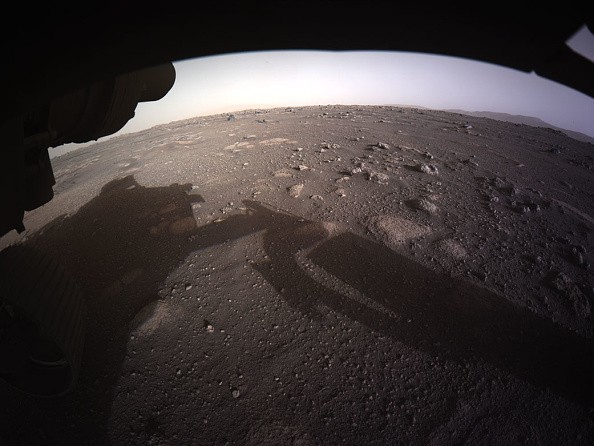
The mission has recorded over five hours of Martian wind gusts, rover wheels crunching over gravel, and motors humming as the spacecraft swings its arm, according to two microphones aboard NASA's Perseverance rover. Thanks to these noises, scientists and engineers may now experience the Red Planet in new ways, and anybody can listen in.
"It's as if you're standing there," said Baptiste Chide, a planetary scientist at France's L'Institut de Recherche en Astrophysique et Planétologie, who examines data from the microphones.
"Martian sounds contain many bass vibrations, so you can feel it when you put on headphones. Microphones, I believe, will be a valuable instrument in future Mars and solar system research."
Perseverance Rover

Perseverance is the first spacecraft to use specialized microphones to record the sound of Mars - both of which were commercially accessible off-the-shelf equipment. One sits on the chassis of the rover's side. The second microphone is mounted on Perseverance's mast to supplement the SuperCam laser instrument's rock and atmospheric investigations.
Related Article : Signs of Sustained Water Interaction Found in Mars' Jezero Crater
High-Tech Space Mic
The SuperCam instrument and microphone were provided by the Los Alamos National Laboratory (LANL) in New Mexico and a consortium of French research laboratories under the Centre National d'Etudes Spatiales. In contrast, the body mic was provided by NASA's Jet Propulsion Laboratory in Southern California (CNES).
SuperCam uses a laser to zap rocks and Earth, then uses a camera to analyze the resultant vapor. Because the laser pulses hundreds of times per target, there are many possibilities to record the sound of those zaps: the microphone has already captured over 25,000 laser shots.
Changes in the Planet's Atmosphere

Scientists are learning about changes in the planet's atmosphere thanks to some of these recordings. After all, sound moves across the air via vibrations. The SuperCam mic is perfectly positioned on Perseverance's mast for detecting "microturbulence" - minute air changes - and complements the rover's specialist wind sensors, which are part of a package of atmospheric instruments dubbed MEDA, which stands for Mars Environmental Dynamics Analyzer.
MEDA's sensors take one to two samples of wind speed, pressure, and temperature every second for up to two hours. The microphone on the SuperCam, on the other hand, can deliver comparable data at a rate of 20,000 times per second over many minutes.
"It's like comparing a magnifying glass to a microscope with 100 times magnification," said Jose Rodriguez-Manfredi, MEDA's lead investigator at the Centro de Astrobiologa (CAB) at Madrid's Instituto Nacional de Tecnica Aeroespacial. "From the standpoint of a weather scientist, each perspective - detail and context - complements the others."
Studying How Sound Travels
The microphone can also be used to study how sound travels on Mars. Scientists thought higher-pitched noises would be challenging to detect because Earth's atmosphere is considerably less thick than Earth's. So a few scientists were astonished when the microphone picked up the buzzing rotors of the Ingenuity helicopter during its fourth trip, on April 30, from a distance of 262 feet, when they weren't expecting to hear anything at all (80 meters).
Researchers were able to reject two of three models created to predict how sound propagates on Mars using data from the helicopter audio.
"On Mars, sound travels considerably further than we imagined," said Nina Lanza, a SuperCam scientist at LANL who works with the microphone data. "It simply goes to illustrate how vital field science is."
For more space related news, don't forget to follow Nature World News!
© 2025 NatureWorldNews.com All rights reserved. Do not reproduce without permission.





